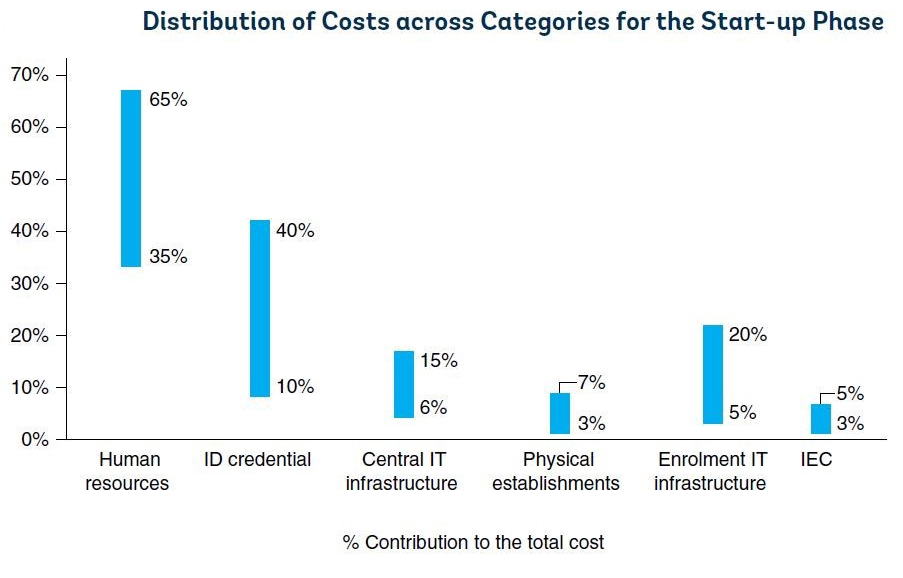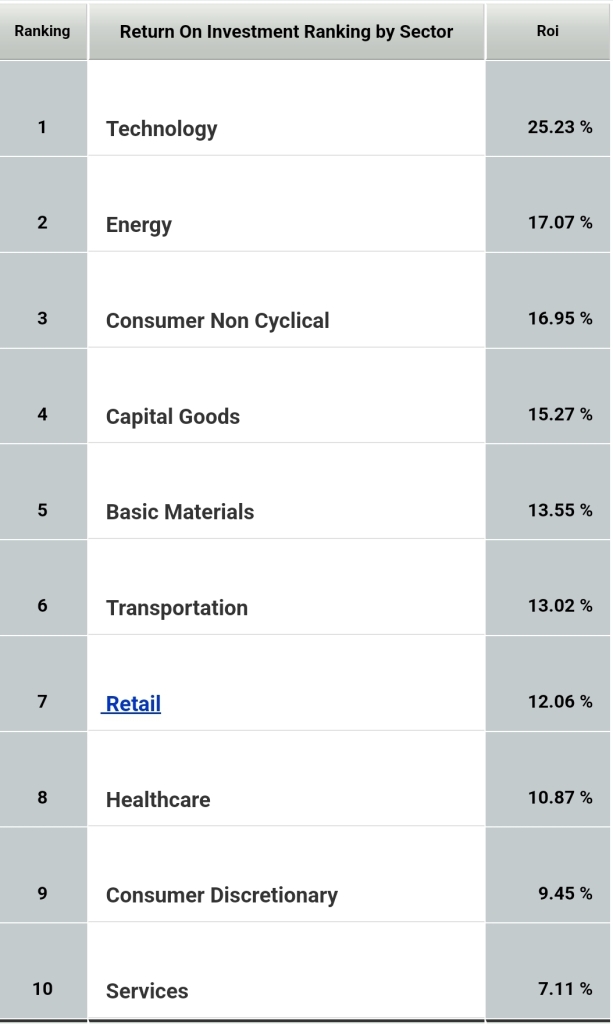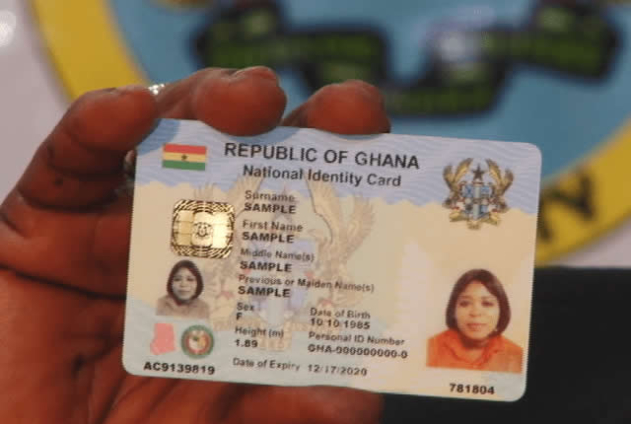
Audio By Carbonatix
Interacting with the Press on 9th August 2022, the Director-General (DG) of SSNIT, Ghana’s public pensions operator, provided some numbers to help the discussion about the economic benefits of the Ghana Card, the ID system the government wants to underpin all public services.
In the DG’s estimation, in the event that SSNIT is able to enroll all the 8 million Ghanaians in the informal and formal sector who are currently not contributing to the Scheme, and if those persons happen to have Ghana Cards, then SSNIT would not need to print 16 million cards (for each of the 8 million new members and a survivor each of all 10 million members). Since in SSNIT’s world the cost of each card is $7, then the savings to the pensions giant will be $126 million.
This is a very hypothetical and optimistic analysis. From the time SSNIT was founded in 1972 to the present, it has never seen a 100% working population coverage. In fact, it has never crossed the 20% mark. To tie expectations of cost savings to such an aggressive prospect is rather strange. At any rate, even if we accepted the “$126 million over 10 years” argument, the arithmetic will still yield $12.6 million a year, not the $30 million the government has announced. So where exactly did the $30 million number come from?
But that is not even what is most wrong about the analysis.
First and foremost, the $7 cost per card figure is NOT the cost solely of producing and printing a physical card. It is the cost of everything about the card. From card production to printing and biometric enrolment. We have yet to even consider indirect costs like datacenter construction, software and system configuration. Separate from the direct and indirect card costs as provided in the preceding are the ongoing administrative costs of personnel, systems upgrade, cybersecurity and data management.

Credit: Clark, Chanda and Wolfe (2018) / World Bank
A blank polycarbonate biometric 256-kb smartcard (the Ghana Card has a 148kb chip with three main applets) and its printing alone, in the volumes we are talking about here, costs less then $2.30 per card, that is: less than 30% of the direct cost of the SSNIT ID card solution on the open market. From the above diagrams, one can infer easily the lower contribution of direct costs to total costs.
- So, should SSNIT decide to halt further card production (as indeed it has), the cost saved per year for new active members will be $2.3 x number of new active enrollees. In recent years, SSNIT has seen active membership grow by less than ten thousand individuals a year suggesting that total savings will be in the region of $23000 per year ($2.3 x 10,000), quite a distance from the $30 million figure in the press.

Obviously, even if because SSNIT members no longer need a physical card from SSNIT (due to use of the Ghana Card), SSNIT no longer has to incur the costs of printing new cards every year, the fact remains that it must spend considerable sums on all the other aspects of membership management. Pensions management naturally has its own workflows, processes and mechanisms to which any identification mechanism must be customised. Thus, SSNIT is not going to be relieved of those identity-related costs such as data management, linking of identity profiles to individual policies, card readers to verify the Ghana Cards submitted etc. These being the costs forming the bulk of SSNIT’s “total cost of ownership” of any digital identity solution it needs to do its work.
Considering that SSNIT’s total annual operational cost is in the region of $40 million per year, savings of $30 million would suggest that identity management of subscribers alone has been or should be absorbing 75% of all expenditures, a wholly inconceivable notion. In fact, after accounting for compensation, administration, goods purchases and services, SSNIT barely has even a million dollars to invest in subscriber experience services as a whole. No wonder then that it has struggled for years to produce these cards.

Nor should it escape readers that a physical ID card is really not essential once biometrics have been collected and stored. Just the membership number of the subscriber and their fingerprint or iris scan are all that one needs for sound identification. Are these then redundant savings?
Why bother correcting the “multimillion dollar savings” narrative though? Because it obscures an important aspect of the Ghana Card that most people don’t understand.
In actual fact, were one to properly understand how the Ghana Card has been designed, it should become clear that SSNIT will actually NOT SAVE ANY MONEY AT ALL.
The reason is the way the public-private partnership between the National Identification Authority (NIA) and the private investors (IMS) was designed. The agreement envisages the government of Ghana guaranteeing a 17% annual return on investment to the investors. With total lifecycle investment pegged at $1.2 billion, the Ghana Card is expected to yield tens of millions of dollars in revenues in order for the government to clear its now mounting debts to the private investors. Because virtually the entire high-end technology stack was provided and is still maintained by topflight technology vendors in the United States and Europe, the private investors have been piling up costs from day one.
A 17% Return-on-Investment (RoI) is however a steal! Few industries report such benchmark average RoIs for deals.

In short, SSNIT is expected to pay through its teeth to use Ghana Card services for authenticating its subscribers. The original PPP business plan actually anticipated fees from SSNIT to the NIA and its private partners to the tune of tens of millions of dollars every year, money that SSNIT simply does not have. The current merger of SSNIT data with NIA data and subsequent creation of data stores at the Bank of Ghana facility hosting the Ghana Card datacenter is merely the start of a process. The next steps involve finalising the full range of services and associated fees that SSNIT is required to pay NIA so that IMS and its own private contractors can be paid.
If the original NIA-IMS Ghana Card business plan is anything to go by, then one can rest assured that in exchange for saving about $23,000 annually in new card printing, SSNIT should prepare to pay in the range of about $0.05 to authenticate each subscriber everytime it needs to identify them as part of its service provision. These costs could easily rack up to several millions of dollars per year. The problem of course is that the Ghanaian public institutions whose fees are expected to fund the hugely expensive Ghana Card platform – NHIA, SSNIT, DVLA etc – are seriously cash-strapped themselves. A fact that puts the entire financial sustainability of the Ghana Card at risk over time.
With all these factors at play, it is fair to ask again: where did the $30 million savings number come from? A cynic may think that the figure was dropped into the public domain as a way of softening the ground to justify large fees from public institutions to private Ghana Card contractors.
Latest Stories
-
Salah-Mane rivalry renewed in AFCON semi-finals
5 hours -
What does Trump’s foreign policy mean for World Cup?
5 hours -
Carrick confirmed as Man Utd caretaker head coach
5 hours -
CPS & JoyNews to hold public lecture on Ghana’s move to back currency with gold
6 hours -
Africa Education Watch supports calls for review of SHS teachers’ manual, curricula over gender controversy
6 hours -
Ntim Fordjour demands review of SHS teachers’ manual over gender controversy
6 hours -
GCB Bank hands over renovated dormitory to TAMASCO
6 hours -
Nkyinkyim Band to headline Ghana Independence celebration in London
6 hours -
NPP leadership has lost touch with grassroot – Dr Nyaho-Tamekloe
7 hours -
IGP’s Team nabs drug suspects in Tamale swoop; seizes cash, narcotics
7 hours -
NaCCA revises teacher manual, withdraws ‘gender definition’ content deemed contrary to Ghanaian values
7 hours -
Ntim Fordjour condemns gov’t over gender definition in curriculum
7 hours -
NPP must develop thick skin for criticism – Dr Asah-Asante
8 hours -
Auditor-General raises alarm over 2,000+ weapon interceptions at airports
8 hours -
Motorists lament years of faulty traffic lights at Poku Transport Junction
8 hours

